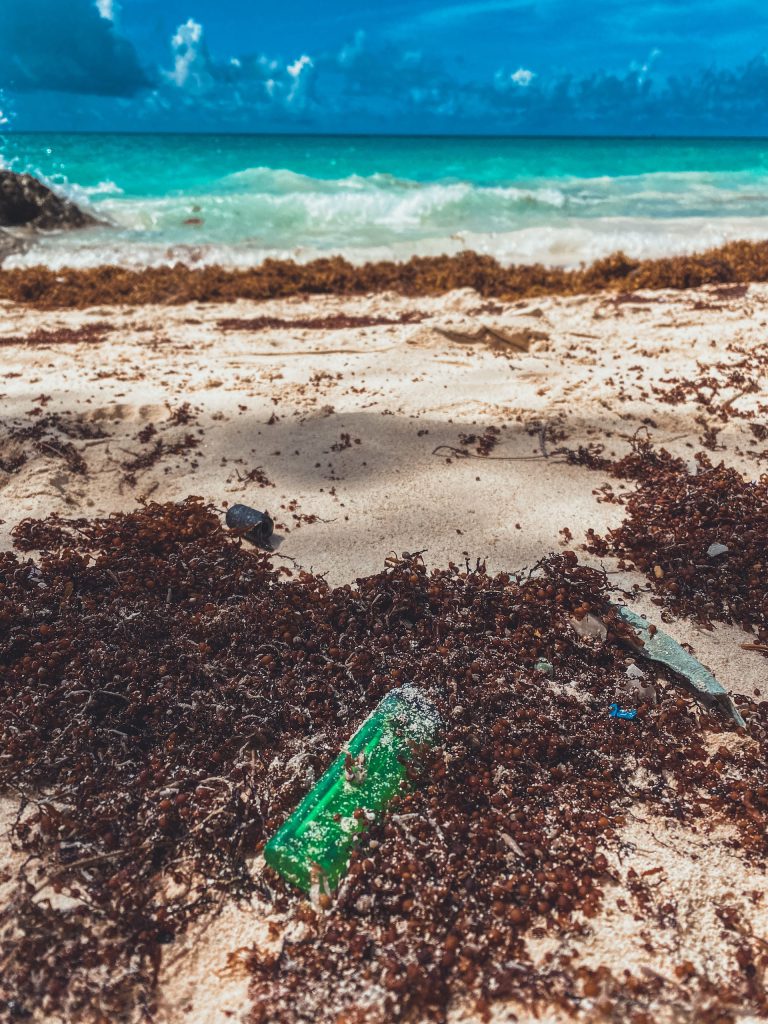Sargassum is a macroalgae that reproduces rapidly in warm waters and moves along the Atlantic currents from Brazil, the coasts of West Africa and from the Sea of Sagazos and has seriously affected the coasts of Quintana Roo.
The atypical (although increasingly typical) rapid reproduction of sargassum occurs due to the ocean’s absorption of most of the heat from greenhouse emissions, the increase in water temperature, and the organic waste that pollutes the sea, since it is They are converted into nutrients that fertilize the macroalgae, which causes its biomass to double every 18 days and this ends up exceeding the ecological balance.

Its presence in the Mexican Caribbean makes sargassum not only a threat to tourism, but also represents a major environmental crisis as it contaminates aquifers, damages marine ecosystems and is also harmful to health.
Some of the specific effects on the environment are:
- Reduction of light and oxygen in the seas, which causes the death of marine species.
- Affectation of sea turtle populations, since they cannot reach the beaches to lay their eggs.
- Acidification of the water that causes more algae to grow than corals.
- Loss of sea grass, which causes beach erosion.
Similarly, chemical studies show that the seaweed contains elements such as arsenic, copper, manganese and molybdenum, among others, in concentrations that exceed the limits established for human and animal consumption.
Likewise, this phenomenon has had a negative impact on the economy of the region, especially in the tourism sector, since the presence of sargassum on the beaches affects their image. The macroalga accumulates on the shores of the beaches, begins its decomposition process and, coming from the gases released by hydrogen sulfide, begins to emit a pestilent odor.
Likewise, UNAM researchers reported that sargassum could definitively change the tone of the sea in the next five or 10 years due to the fluids that the plant expels in its decomposition process.
Management of sargassum in Quintana Roo
The arrival of this macroalgae to the coasts of Quintana Roo is a problem that worsens year after year and it is expected that in 2023 it will exceed the previous levels. According to studies from the University of Florida, it is expected that this year the arrival of the algae will exceed the 54,000 tons that were collected in 2022, estimating that it will reach 90,000 tons in 2023.

The authorities have announced several measures to combat the problem, including the installation of anti-sargassum barriers and the construction of a plant to treat it, as well as collection by the Navy and private companies, but they have not been enough to mitigate the problem. In addition, many of the areas designated to deposit sargassum do not have the necessary measures to prevent soil contamination.
The only beaches that are spared from the arrival of the macroalgae and are kept clean or with low presence are those of Holbox, Isla Contoy, Isla Mujeres, the hotel zone of Cancun and the west coast of Cozumel, but its frequency and intensity is completely variable. The Sargassum Monitoring Network, as its name suggests, monitors and reports on the situation of the beaches and publishes a “sargassum traffic light” for the Quintana Roo coast.
The reality is that today there is no definitive solution, but what we do know is that the situation requires a short, medium and long-term strategy. The cooperation of the authorities, more scientific research, as well as greater private initiative and civil society is necessary to address this very serious problem where joint solutions are found with the International Community to protect the environment and the economy of the region.

For more articles on tourism and real estate, visit: propertyjournal.com.mx












